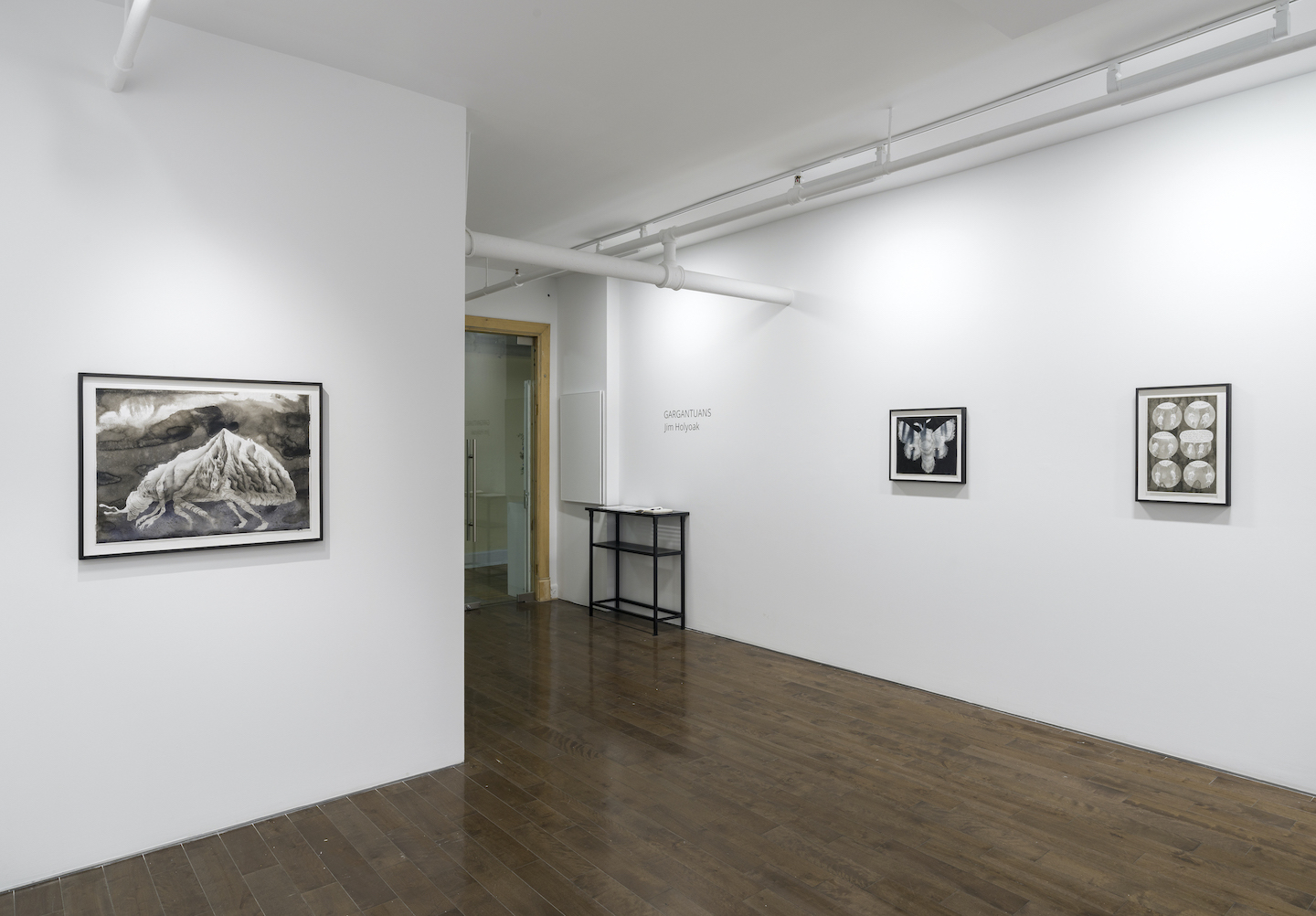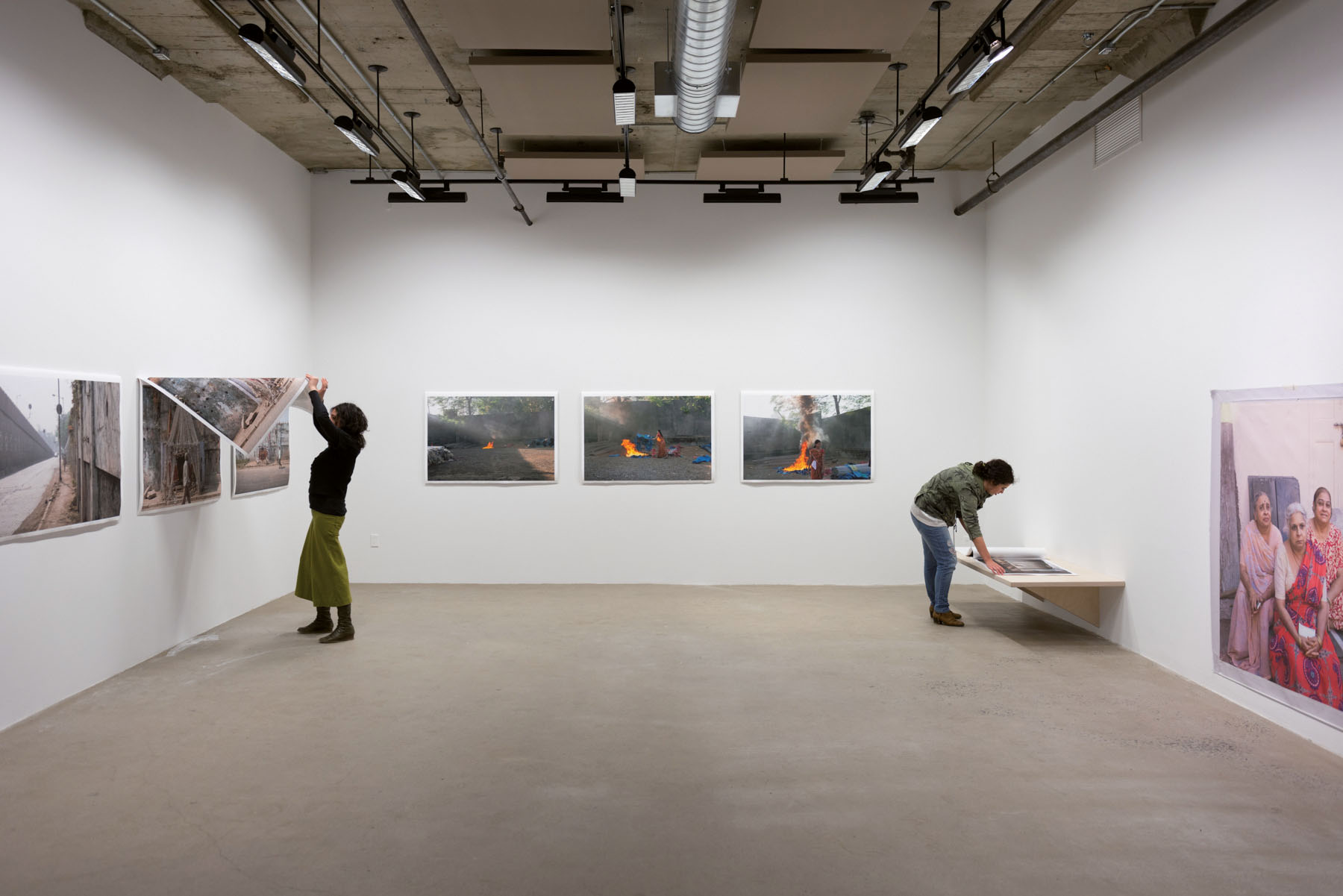
Photo: Guy L’Heureux, courtesy of McBride Contemporain, Montréal
May 25 – June 30, 2023
[En anglais] In “Promises of Monsters: A Regenerative Politics for Inappropriate/d Others,” Donna Haraway offers that “nature is not a place to which one can go”; rather, it is “a topos, a place, in the sense of a rhetorician’s place or topic for consideration of common themes; nature is, strictly, a commonplace.” “Nature,” she continues, “is also a tropos, a trope. It is figure, construction, artifact, movement, displacement.” Haraway describes this essay, included in The Monster Theory Reader, as “a mapping exercise and travelogue through mindscapes and landscapes of what may count as nature in certain local/global struggles.” Both the distinction of nature as topos and tropos and the methodology of the essay as a mapping exercise/travelogue of mindscapes/landscapes that includes a concern with the local and the global seem to form an energetic framework for Jim Holyoak’s exhibition Gargantuans, as well as for his extended practice.
Comprising eleven framed works of ink, graphite, and/or watercolour on paper, Gargantuans operates as an abbreviated index of Holyoak’s environmental imagination, in which landforms and oft-maligned winged or clawed creatures of the night, such as bats and moths, coalesce into washed hybrids whose edges are invited to bleed into one another. Part dreamwork, part remembrance, the darkly atmospheric landscapes, some turned bestiary, perform the discourse-ordering and memory-composition functions that Haraway assigns to place as topos. Through Holyoak, these landscapes become the enspirited locations that she calls for as places to rebuild public culture, whereas nature becomes tropos through hybridity formed of geologic and corporeal communion. In Mt. Lady Loki (2023), for example, a mountain becomes a ladybug (or vice versa), its white ridgeline descending into a bowed head with antennae divining westward. A network of darkened gorges and gullies descend from the apex, luring us into the interior, as the cavernous becomes the intestinal or skeletal. The sharpness of the backbone and the angle of the peak betray the usual smooth convex expected of the ladybug’s shell to form a grotesque iteration of what might be considered a more whimsical insect. In the ink-on-Chinese-paper Wandering Gargantuan (2022), craggy columns rise ominously off the armoured back of an Ankylosaurus; they resemble the eroded geologic abscesses of Mt. Lady Loki, but this time the force is ascending, so that one cannot be sure if the mobile ecosystem is made of gas or stone. An irregularly shaped skull radiates out of the exhaust above the beast’s nape, a subtle revelation reminiscent of the corpse’s head that Bruegel hid beneath the bushes bordering the ploughman’s stepped terrain in Landscape with the Fall of Icarus.
Créez-vous un compte gratuit ou connectez-vous pour lire la rubrique complète !
Mon Compte

